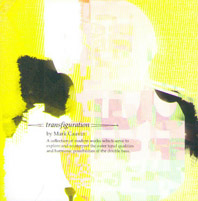www.markcauvin.com
 |
A double CD of works for solo double bass is unique and special. The bass normally complements other instruments in an orchestration, supporting rather than providing the primary melodic direction. The name “bass” is interchangeable with its place on the stave and defines its presumed musical character. But, as a solo instrument, the identity of the bass is transformed, and it can be made to produce the widest range of pitches, beyond its typically subsidiary role.
This is an absorbing CD from virtuoso Australian double bassist Mark Cauvin, and something of a challenge for the novice listener. I had to work at understanding what was happening, but careful attention is greatly rewarded. Cauvin is clearly a passionate and eloquent exponent of the instrument, its varied and challenging literature and the aesthetics emerging from developmental composition. He has collected some of the great examples of work written or transcribed for it and performs them with consummate facility. This CD is a collector’s item not only for students of the bass but also for any student of twentieth century music, as it includes compositions by major composers such as Berio, Xenakis and Scelsi.
The first thing you notice is the extraordinary production. The bass is so closely microphoned it's as if you are sitting right next to the performer. You hear every nuance, and the resonances and harmonics that such an instrument can produce can be breathtakingly sensuous, even erotic. This is a confrontingly intimate performance, which must be heard on a quality hi-fi that can reproduce accurately the subtle overtones and deep notes that characterise the sound.
The CD opens with a 1975 transcription by Fernando Grillo of Giacinto Scelsi’s Ko Tha I, II and III for guitar. As with the guitar version, the instrument is laid flat on its back, and both the body and the strings are played with the hands. The CD notes indicate that, in this version, the performer must bow both in front and behind the strings and also insert knitting needles between strings, in the style of prepared piano, to create novel sonic effects, greatly extending the range of possible sounds that can be orchestrated into the whole. The overall effect is ethereal.
Cauvin has studied with contrabass master and teacher Fernando Grillo whose compositions and influence generally pervade the CD. Grillo accounts for two compositions on CD 1, including a study written specifically for Cauvin, and the monumental Suite 1 for Double Bass (1983–2005) that occupies the whole of CD 2. Grillo’s are demanding works, especially the Suite, the manuscript of which is accompanied by a 17-page instruction booklet indicating in minute detail how the work must be played, including graphically described bowing techniques. Grillo’s Suite adopts the Baroque format as well as character, and the work proceeds from Bach’s legendary studies for solo cello. The work has the emotional power and uplifting melodic lines characteristic of the Baroque suites, but with digressions into more meditative and experimental compositional and technical territory. The emphasis is also on the resonance, timbre and sonority of the bass, complex chords, sudden changes of tempi and extended techniques such as simultaneous bowing and plucking. The bass can produce a sweetly seductive cello-like sound and then abruptly plunge into darkly reverberant depths some octaves lower, rapidly shifting the listener’s awareness from the sentimental to the visceral, and thus offering an unparalleled compositional palette.
The Grillo Suite is not the only Baroque reference on the CD—Cauvin also includes Swiss composer Julien-Francois Zbinden’s 1951 Hommage a Johann Sebastian Bach (Op 44) which takes the musical form into quite different territory.
Some of the works on the CD require extraordinary technical gymnastics. For example, Iannis Xenakis’s θEPAΨ—Theraps for contrebasse solo (1976, dedicated to Grillo) includes not only chords, but polyphonic glissandi. László Dubrovay’s haunting piece Solo No 10 for Double Bass (1991) opens with high pitched whistle-like glissandi that evoke a mournful soprano voice, and also requires quadruple stopping.
Overall, the selection of works on this CD constitutes an exhaustive exploration of the sonic and musical capacities of the instrument short of amplification or electronic mediation. And the more you listen, the more you appreciate the immense stamina and concentration required to realise these works at the necessary level of perfection. Cauvin’s Transfiguration leads us to a new appreciation of the musical possibilities of the double bass, which are demonstrably at least as great as those of any other stringed instrument.
Chris Reid
© Chris Reid; for permission to reproduce apply to [email protected]








 back
back